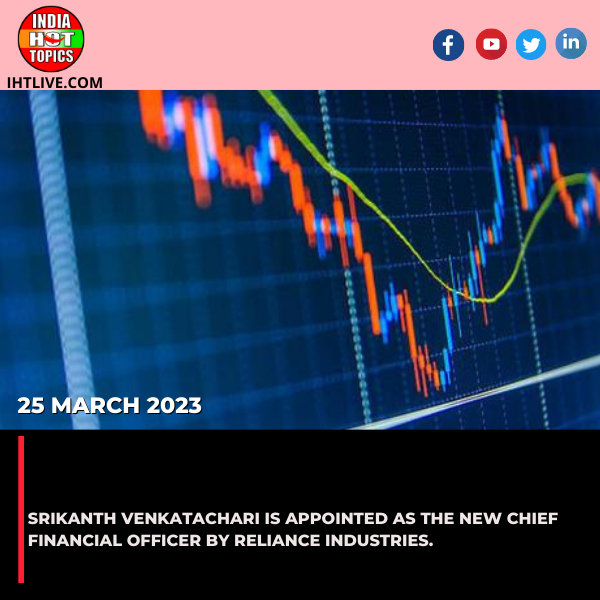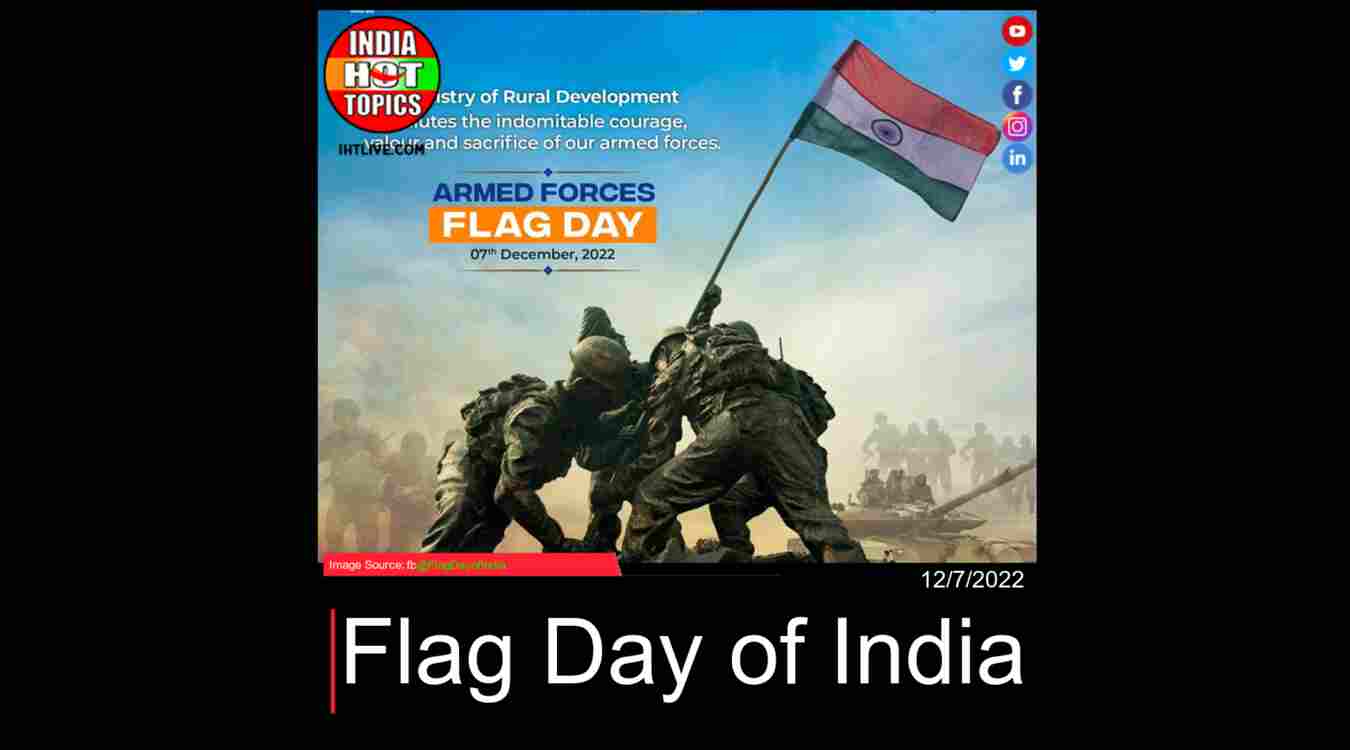India
Caste and welfare mixed with a southern flair: Election in Pincodes

HT examines a few crucial seats throughout the nation that best capture the factors influencing the current Lok Sabha election.
Lakshmi Tirupatamma follows a custom. Every month on the first, the 22-year-old leaves on a well-known journey to visit 50 homes. She first retrieves her outdated Android phone and a bulging folder from her cabinet. In her Andhra Pradesh neighbourhood of Navaluru, a peri-urban sprawl on the outskirts of the Guntur district, everyone knows everyone. Celebrations of life like birthdays and marriages are shared, as also rumours about single individuals spotted cuddling up with frosted soft drink bottles.
Like most of the 25,000 people living in the town, Lakshmi is a master at small chat despite only having completed her high school education. She skillfully balances her desires for cosmopolitanism with the morals of a tiny town. Her ability is put to good use as a volunteer at the village panchayat secretariat office, where she helps the state government with a variety of tasks. These include visiting 50 households, identifying government scheme beneficiaries, assisting with the creation of all necessary identity cards, delivering pensions, and making sure that all welfare schemes are delivered to the last mile.
She is paid 5,000 a month for this. In addition, the volunteers earn widespread recognition straight away, an Android phone, a government ID that works practically anywhere in rural Andhra Pradesh, and the ability to talk a lot about their “government job.” It is a blessing for a recent high school graduate who had to drop out owing to financial difficulties.
“I was extremely happy to have a job,” Tirupatamma remarked.
However, in November of last year, the state government planned a caste census, the second comprehensive one after Bihar, which put her already full plate at risk of overflowing. Chief secretary KS Jawahar Reddy outlined the state’s plan in an eight-page letter that HT was able to view. The letter addressed all senior government employees and was primarily focused on the 266,000-person army of quasi-government workers, or Tirupatamma, who are the backbone of Andhra Pradesh’s welfare delivery system. The state-wide census was eventually finished in February, following two rounds of delays. This places Andhra Pradesh in a select group of states that have tried to physically count every caste—a colonial practice that independent India shunned.
The exercise’s external objective was clear: identify the ways in which social programmes are ingrained in underprivileged areas and implement remedial measures. According to the letter signed by Reddy, “the caste survey can play a crucial role in enabling customised development strategies for the historically marginalised communities by revealing development gaps and disparities in the social and economic opportunities within various castes.”
In the southern state, where assembly polls are being held in conjunction with general elections and chief minister YS Jagan Mohan Reddy is aiming to become the first chief minister since his father, YS Rajasekhara Reddy, to win a second consecutive term—a feat no one has accomplished in fifteen years—shifting caste dynamics were also intertwined with this. There were some similarities between it and a similar experiment that was conducted in Bihar for similar overt political reasons, but the consequences have remained unclear due to the radically different caste relations on both sides of the Vindhyas.
The list
One hot February day, Tirupatamma, dressed in a pink salwar-kameez, brushed loose hair off her face. As her tour came to a close, she stopped at K Nagaraju’s house. She knew the family from before, having seen their three-room home with its fake marble floors and pale yellow peeling paint. “Every month on the first, I come here to give the family pension and ration,” she said.
However, this time around, the practice was more delicate and intricate. Lakshmi opened her phone and opened the Citizen Outreach app, which is a government app. Lakshmi was required to complete the survey in two phases, consisting of 14 questions each for the household and member sections.
Information on the family’s size, kind of home, access to restrooms, supply of cooking gas and drinking water, and whether or not the family raised any animals was requested in the household section. The same set of questions were asked in the member section about personal information, gender, age, caste, subcaste, religion, ration card number, work experience, educational background, and amount of land owned.
Because I visit this place frequently, the name, age, and number of occupants in the residence have already been entered. But I had to confirm Nagaraju’s qualifications before moving on to look for information on the availability of necessities like drinking water and restrooms,” she stated.
However, this was not the previous instance. The cluster monitoring officer and the taluk or zonal officer, who were keenly aware of the stakes, were watching over her shoulder to make sure that the most crucial subject of all—caste—was asked and addressed amicably. However, much as in Bihar, caste is widely known in villages, and the only people who are hesitant are those who are at the bottom of the caste hierarchy.
Everybody knows everyone else. Our communities are home to the volunteers. Every month on the first, we eagerly await their coming. Thus, this procedure is merely another duty for me,” Nagaraju remarked.
By now, the sun was beating down fiercely, and Lakshmi was typing frantically at her screen. Before she could take a lunch break, she needed to confirm that Nagaraju indeed had chickens or animals, and the information she had entered into the app needed to be confirmed twice. And she was down to only one residence.
The political
Andhra Pradesh’s politics have revolved around the two dominant communities, the Reddy and Kamma, since the state was split from the former Madras state in 1956. The former supported the Congress before defecting to the YSR Congress, while the latter backed the Telugu Desam Party (TDP), which has largely alternated in power. The Kammas are local business magnates who seldom agree with the land-owning Reddys.
This is nowhere more evident than in the coastal Andhra districts of Guntur and the rice bowl. Silent and helpful, Venkat Kumar Jasti listed his land holdings and the number of cows in his goshala one afternoon in February. But the dam broke just as Pranavi, the mandal parishad development officer, was leaving his home. “After my father passed away, I relocated from Visakhapatnam to Eluru three years ago, but despite my repeated requests to the government, I still haven’t received my voter card. “Is it because the state is run by a Reddy and I am a Kamma?” he questioned furiously.
Yet, the changing sands of caste in the divided state – it lost 10 districts and the financial powerhouse of Hyderabad to Telangana in 2014 – have made traditional patterns unreliable, prompting major parties to look for new social alliances. Scheduled castes (SCs) and other backward classes (OBCs) are key players in this new upheaval.
“NT Rama Rao gave the OBCs their first political boost when he realised that the only way to end the Congress-affiliated Reddys’ hegemony was to win backward and Kamma votes. Many OBC community leaders are still affiliated with the TDP today. According to Krea University professor Sambaiah Gundimeda, Jagan was attempting to buck this trend.
An essential component of this tactic was caste enumeration. In order to count the 723 recognised caste groups (Bihar had 215), the government used its grassroots network of welfare volunteers and kept the sanctioned overhead low, at ₹10 crore as opposed to ₹500 crore in Bihar.
All four major parties, the YSR Congress, the TDP, the Jana Sena (which claims to speak for the interests of the powerful Kapus), and the BJP, first supported the caste survey on this delicate issue. However, the TDP quickly voiced concerns, believing that the government was using its welfare infrastructure to win over more votes. Senior TDP leader Pattabhi Ram said, “Jagan Reddy basically wanted to know who will vote for them and who won’t.”
North against South
One of the main themes of the national general elections is the struggle over the opposition’s pledge to conduct a caste census across the country. However, when one moves from the heartland to the peninsula, the caste system’s outlines change significantly.
Examine the two surveys on caste. The Bihar exercise lasted for six months and was the subject of a contentious judicial dispute that took place in both the high court and the Supreme Court. With a focus on the extremely backward castes (EBC) and Dalits, two groups that chief minister Nitish Kumar has painstakingly nurtured to rekindle Mandal-era consolidations, the survey played a crucial role in raising the caste-based quota to 65%. Indeed, Kumar’s return to the NDA has mitigated a good deal of the survey’s negative effects.
But the procedure in Andhra Pradesh was completed in only two weeks. Even after three months, the results are still unknown, and most people agree that they won’t significantly alter social dynamics. “At first, we thought it may benefit our neighbourhood, but now that these elections have occurred. “In Guntur town, only the Reddys and Kammas are making decisions,” stated Anand N, a Dalit driver of autorickshaw.
CM Reddy has never mentioned the survey as a significant accomplishment of his administration during an electoral rally. Kiran Kumar Gowd, president of the All India OBC Students Association, stated, “It now appears that the exercise was to sharpen YSR Congress’s welfare politics because the CM was looking at a last-minute push to overcome anti-incumbency.”
The trajectory of caste politics in south India, which differs greatly from the Mandal churn that has created more room for backward castes in the heartland, is the fundamental cause of these disparate dynamics. Damodaram Sanjivayya, the first Dalit chief minister of India, was appointed to the erstwhile unified Andhra Pradesh in 1960 (north India had to wait till Mayawati in 1995). Early OBC political movements started in Andhra in the late 1970s, and they were more organised in 1982 when the TDP was established. The community got a taste of power two years prior when NT Rama Rao won a landslide of assembly seats. “A variety of factors, including the Naxal movement, caste violence, local resistance movements, and land ownership, come together to form caste politics in this region.”cited Vageeshan Harathi, an assistant professor at Hyderabad’s NALSAR University.
A result of this convoluted past is the subordination of the lower classes, a topic of discussion that is still relatively new in the Midwest. For instance, the OBC quota in Andhra Pradesh is divided into five classes, A, B, C, D, and E, with percentages of 7%, 10%, 1%, 7%, and 4%, in that order. This should, in principle, result in more precisely focused quota benefit distribution. However, this has also led to a fragmentation of political authority, as underprivileged areas compete with one another for more advantages from reservations. This effectively means that while caste groups are competing with one another within each category, no macro mobilisation of the EBC kind can take place.
A radically different interpretation of the meanings of religion and caste is the second result. For example, Mary Rathnakumari identifies as Christian even though she is a SC. She claimed she never obtained her baptism certificate from the church because she did not want to miss out on quota benefits when the enumerator requested her to show it. An anonymous staff member of the chief planning officer stated, “There are many like her who straddle both worlds.”
A fierce conflict
This time around, one of the most hotly fought parliamentary seats is Guntur, where the three entwined themes of caste, welfare, and politics collide.
Since 1999, when the state’s assembly and Lok Sabha elections have coincided, the party or alliance that has performed well in the former has also performed well in the latter. However, in other states where voters now make different decisions depending on whether they are voting for the state or federal government, this correlation has weakened.
The TDP, in coalition with the Jana Sena and the BJP, and the YSR Congress, fighting alone, are engaged in a straight-up war in Guntur. Months before the polls, Jayadev Galla, the TDP’s current member of parliament and one of just three party candidates to win in 2019, unexpectedly announced his retirement.
The party has chosen to defend a seat it won by a razor-thin margin of 4,200 votes the previous time around in the Lok Sabha contest against Pemmasani Chandra Sekhar, a physician and one of the wealthiest candidates in the state. In an attempt to increase the Kamma, dominant, and peasant castes that make up the party’s core vote, the party is discussing its development plan for the state and focusing on Prime Minister Narendra Modi’s Viksit Bharat pitch. The hope is that economic ambitions in a city close to the state’s largest commercial hub, Vijayawada, will triumph over caste loyalties. In this equation, the Kapus, who make up around 10% of the state, are an important factor.
The current member of the Ponnur legislative assembly seat, one of the seven segments that comprise the Lok Sabha, K Venkata Rosaiah, has been nominated by the YSRCP, in contrast. Of these seven assembly constituencies, six are held by the party. The party has made a commitment to enhance its welfare architecture, known as navaratnalu or nine stars, if it returns to power. This architecture includes health care, monthly financial support, payments to farmers, pensions, and housing help. Along with the dominating Reddys, Dalits and tribals—many of whom are impoverished—make up the majority of the party’s supporters, which makes welfare a crucial platform.
The roughly 140 castes that make up the OBC category in the state are what keep things in balance. According to the 2019 CSDS-Lokniti Post-Poll Survey, backwards were distributed about equally between the two main groups. While the TDP coalition made a separate proclamation on backward classes, pledging bigger funds, more quota advantages, and a special law to safeguard the community, the YSRCP has emphasised its record of establishing over fifty backward caste enterprises.
The roughly 140 castes that make up the OBC category in the state are what keep things in balance. According to the 2019 CSDS-Lokniti Post-Poll Survey, backwards were distributed about equally between the two main groups. While the TDP coalition made a separate proclamation on backward classes, pledging bigger funds, more quota advantages, and a special law to safeguard the community, the YSRCP has emphasised its record of establishing over fifty backward caste enterprises. He claimed, “The caste survey guys came and said their purpose was to make sure we could demand what was rightfully ours.” However, since then, all we have heard are assurances of additional doles. Where are we employed?
At least in that regard, the north and south appear to be linked.
General News Platform – https://ihtlive.com/
Entertainment News Platforms – anyflix.in
Construction Infrastructure and Mining News Platform – https://cimreviews.com/
Podcast Platforms – https://anyfm.in/
India
US B1/B2 visa wait time exceeds 1 year for Indians: Report

Despite the US fully resuming visa operations, demand for tourist and business (B1/B2) visas continues to exceed available appointment slots, creating major backlogs across US consulates in India. Wait times in Hyderabad, Delhi, Mumbai, and Chennai range from 7.5 to 13.5 months, with Chennai facing the longest delay at 13.5 months. These prolonged delays are disrupting.
Travel for family functions, weddings, business events, and emergencies. Priority appointments remain limited, offering little relief even in urgent cases. Business professionals are among the worst hit. With no clear or predictable appointment system, applicants are left checking the portal repeatedly without success, making travel planning extremely difficult.
The US has announced visa restrictions on owners, executives, and senior officials of Indian travel agencies accused of knowingly facilitating illegal immigration to the United States. Mission India’s Consular Affairs and Diplomatic Security Service work daily across the embassy and consulates to identify and target those involved in illegal immigration, human.
Indian applicants seeking U.S. B1/B2 visas are encountering unprecedented delays, with wait times now extending beyond a year in several major cities. This situation is significantly impacting travel plans for business, tourism, and personal emergencies.
Extended Wait Times Across Major Cities
- Chennai: 13.5 months
- Delhi: 9 months
- Mumbai: 9.5 months
- Hyderabad: 7.5 months
These prolonged delays are causing applicants to miss critical events such as weddings, business conferences, and family gatherings. For instance, a homemaker planning to attend her nephew’s wedding in August found the earliest available appointment was in March of the following year, rendering her unable to attend.
Impact on Travelers
The extended wait times are affecting various categories of travelers.
- Business Travelers: Professionals are facing challenges in attending international conferences and meetings, leading to potential financial losses and missed opportunities.
- Tourists: Individuals planning leisure trips are forced to postpone or cancel their plans due to the unavailability of timely visa appointments.
- Family Emergencies: Applicants aiming to visit the U.S. for urgent family matters, such as childbirth or medical emergencies, are unable to secure appointments in time.
While students and emergency travelers are given limited priority slots, general applicants looking to visit family, attend events, or explore travel opportunities.
Underlying Causes
Despite the U.S. fully resuming visa operations, the demand for tourist and business (B1/B2) visas continues to far exceed available appointment The U.S. Department of State acknowledges these delays and advises applicants to plan their travel well in advance. They also suggest that applicants regularly check the appointment scheduling system for any earlier slots that may become available due to cancellations.
Recommendations for Applicants
- Early Planning: Initiate the visa application process as early as possible to accommodate potential delays.
- Regular Monitoring: Frequently check the appointment scheduling system for any earlier slots that may open up.
- Consider Interview Waivers: Applicants renewing their visas or meeting specific criteria may be eligible for interview waivers, potentially expediting the process.
- Stay Informed: Keep abreast of updates from the U.S. Embassy and Consulates regarding visa processing times and appointment availability.
The prolonged wait times for U.S. B1/B2 visas are causing significant disruptions for Indian travelers. Applicants are advised to plan ahead, explore all available options, and remain patient as they navigate the visa application process
Indian applicants for U.S. B1/B2 visas are facing unprecedented delays, with wait times now exceeding one year in major cities. Chennai reports the longest delay at 13.5 months, followed by Delhi and Mumbai at approximately 9 to 9.5 months, and Hyderabad at 7.5 months. These prolonged wait times are disrupting travel plans for family events, business engagements.
- Group Media Publication
- Construction, Infrastructure and Mining
- General News Platforms – IHTLive.com
- Entertainment News Platforms – https://anyflix.in/
India
Want to buy property in Bengaluru? Forget brochures, visit on a rainy day, says Reddit user

A Reddit user has advised homebuyers in Bengaluru to avoid glossy brochures and visit neighborhoods on rainy days before making any decisions. The user’s viral post, “Bangalore Rain: The best real-estate Litmus test?”, triggered an avalanche of agreement and grim humour from Bengalureans. Many residents chimed in with their own cautionary tales.
Survival tips from navigating the city’s infrastructure during monsoon downpours. Some even crowdsourced flooding data from social media to avoid future real-estate regrets. Some pointed to Bengaluru’s history to explain today’s mess, highlighting how unchecked urban development over natural water bodies has worsened the city’s drainage woes Bengaluru.
Receiving over 100 mm of rainfall in just 24 hours this week, one of the highest in recent years, the advice seems more relevant than ever The Indian media has been flooded with trending photos from the Cannes Film Festival, featuring celebrities such as Eva Longoria, Diane Kruger, Benedict Cumberbatch, Jennifer Lawrence, and Robert Pattinson. The event also saw.
The elimination of Lucknow from the playoff race. The red carpet looks for the film festival included Hollywood glamour from Jennifer Lawrence and Robert Pattinson. The realme NARZO 70 Turbo 5G, a segment-fastest dimensity 7300 energy 5G chip, is available at 36% off. The Lava Agni 3 5G, India’s first dual AMOLED display, is available at 25% off. The TECNO.
Phantom X2 5G Moonlight Silver processor is available at 54% off. Other top deals include 5 kg dumbbells for beginners, 8 best baby luggage bags for airport strolls, the best ultrawide monitors for gaming, editing, and work setups, and the best vacuum cleaner for carpets. The trending photos also highlight the importance of staying organized and organized during.
When it comes to buying property in Bengaluru, most homebuyers start with glossy brochures, 3D walkthroughs, and sunlit sample apartments. But a now-viral Reddit post has turned that notion on its The advice came from a Bengaluru-based Reddit user who shared their personal experience navigating the city’s tricky monsoon terrain in search of their dream home.
“Brochures lie. Rain doesn’t,” the user wrote, summing up a sentiment many frustrated Bengaluru residents can relate to.
Why Rain Reveals the Truth
In a city infamous for its poorly planned infrastructure, flash floods, and waterlogging, especially during monsoon, a rainy-day visit can reveal a property’s real condition. That swanky apartment with manicured lawns and a posh clubhouse? It could be located in a low-lying area that floods every season. That beautiful driveway? Might turn into a river once.
- Waterlogging: Is the area prone to flooding? Are roads passable?
- Drainage: Are there visible drainage lines? Are they choked or flowing freely?
- Basement & Parking: Check if basements or parking areas are dry or submerged.
- Access Roads: Narrow internal roads may be hard to navigate when flooded.
- Odor and Hygiene: Poor drainage can lead to foul smells and mosquito breeding.
A Wake-Up Call for Developers?
This Reddit post has sparked wider discussions among Bengaluru’s real estate forums and homebuyer communities. Some developers argue that monsoon issues stem from municipal mismanagement, while others acknowledge the need for better infrastructure planning within residential complexes The viral advice serves as a timely reminder for developers to move.
Beyond cosmetic marketing and focus on resilient design and sustainable In a tech-driven age where virtual tours and digital brochures dominate the property market, sometimes the oldest methods work best. A simple walk in the rain might tell you more than any fancy presentation can So if you’re looking to buy property in Bengaluru — keep the umbrella handy and ditch.
- Group Media Publication
- Construction, Infrastructure and Mining
- General News Platforms – IHTLive.com
- Entertainment News Platforms – https://anyflix.in/
India
Courts cannot interfere unless glaring case made out’: CJI Gavi’s remark on Waqf Act

The Indian Supreme Court (SC) is hearing petitions challenging the Waqf (Amendment) Act, 2025, which was enacted into law last month. Chief Justice BR Gavai stated that laws passed by Parliament are assumed to be constitutional, and courts cannot intervene unless there is a clear and serious problem. The apex court identified three key issues: Waqf by user.
The nomination of non-Muslims to the Waqf Council and state Waqf Boards, and the identification of government land as Waqf property. The Centre had assured it would not proceed on these matters until the case was settled. However, senior advocates Kapil Sibal and Abhishek Manu Singhvi, appearing for the petitioners, opposed this. Sibal argued that the Act.
Is designed to seize Waqf lands without due process, and that only a person who has practised Islam for at least five years can create a Waqf. Chief Justice Gavai responded that there is a presumption of Constitutionality in legislation passed by Parliament and that courts cannot interfere unless a glaring case is made out New Delhi, May 20: Chief Justice of India (CJI) D.Y.
Chandrachud, along with Justice B.R. Gavial, made a significant observation during a Supreme Court hearing regarding the constitutional validity of the Waqf Act, 1995. In a statement that could have far-reaching implications, Justice Gavial remarked that “courts cannot interfere unless a glaring case is made out. The remark came during the hearing of a petition that.
Challenged certain provisions of the Waqf Act, citing alleged violation of constitutional principles such as equality before law, secularism, and property rights. The petitioner argued that the Act conferred excessive powers on the Waqf Boards and allowed encroachment on private property under the pretext of religious administration Justice Gavai, while responding.
To the petitioner’s counsel, emphasized the constitutional limits within which the judiciary operates. “Every religious or charitable trust—be it Hindu, Christian, or Muslim—has its own framework under the law. Unless a glaring violation of constitutional rights is demonstrated, judicial interference would be unwarranted,” he stated The bench questioned whether.
The petitioner had established sufficient grounds to show that the Act was inherently discriminatory or arbitrary. “We are not here to sit in judgment over Parliament’s legislative competence unless it is shown that the law is manifestly unconstitutional,” CJI Chandrachud added The Waqf Act, 1995, governs the administration of waqf properties—assets donated for.
Religious or charitable purposes under Islamic law. The Act provides for the creation of State Waqf Boards to manage such properties and address related disputes. Over the years, it has been the subject of several legal controversies, particularly concerning land ownership and the scope of powers exercised by the Waqf Boards The petitioner contended that the Act enables.
Waqf Boards to unilaterally declare properties as waqf without due legal process, thereby infringing on the property rights of individuals. The counsel also cited instances where people discovered that their land was classified as waqf only during transactions or legal disputes Justice Gavai acknowledged that concerns regarding land ownership and procedural fairness.
Important but reiterated the need for clear constitutional breaches before striking down any law. “You may have individual grievances, but that does not automatically render the entire Act unconstitutional,” he said The court advised the petitioner to pursue remedies through civil courts in cases of disputed property classification. CJI Chandrachud remarked someone.
Land has been wrongly notified as waqf, they have the right to challenge it. But that is a matter of individual litigation, not a ground to annul the statute itself Legal.
- Group Media Publication
- Construction, Infrastructure and Mining
- General News Platforms – IHTLive.com
- Entertainment News Platforms – https://anyflix.in/
-
Tech4 months ago
Best Zebronics Bluetooth speakers you can buy today for an unmatched audio experience
-

 India2 years ago
India2 years agoNew Season 8 The Walking Dead trailer flashes forward in time
-

 India2 years ago
India2 years agoThe afternoon briefing revealed that 97.26% of the ₹2000 notes were returned, and the Israeli Prime Minister committed to war goals.
-

 World12 months ago
World12 months agoMichigan splash pad attack: A couple was shot seven times in total while defending their two small daughters.
-

 India2 years ago
India2 years agoSrikanth Venkatachari is appointed as the new chief financial officer by Reliance Industries.
-

 India2 years ago
India2 years agoPM Modi’s Three-Nation Tour Begins with a Traditional Welcome in Papua New Guinea
-

 India8 years ago
India8 years agoThe 9 worst mistakes you can ever make at work
-

 Special 365 days2 years ago
Special 365 days2 years agoFlag Day of India





